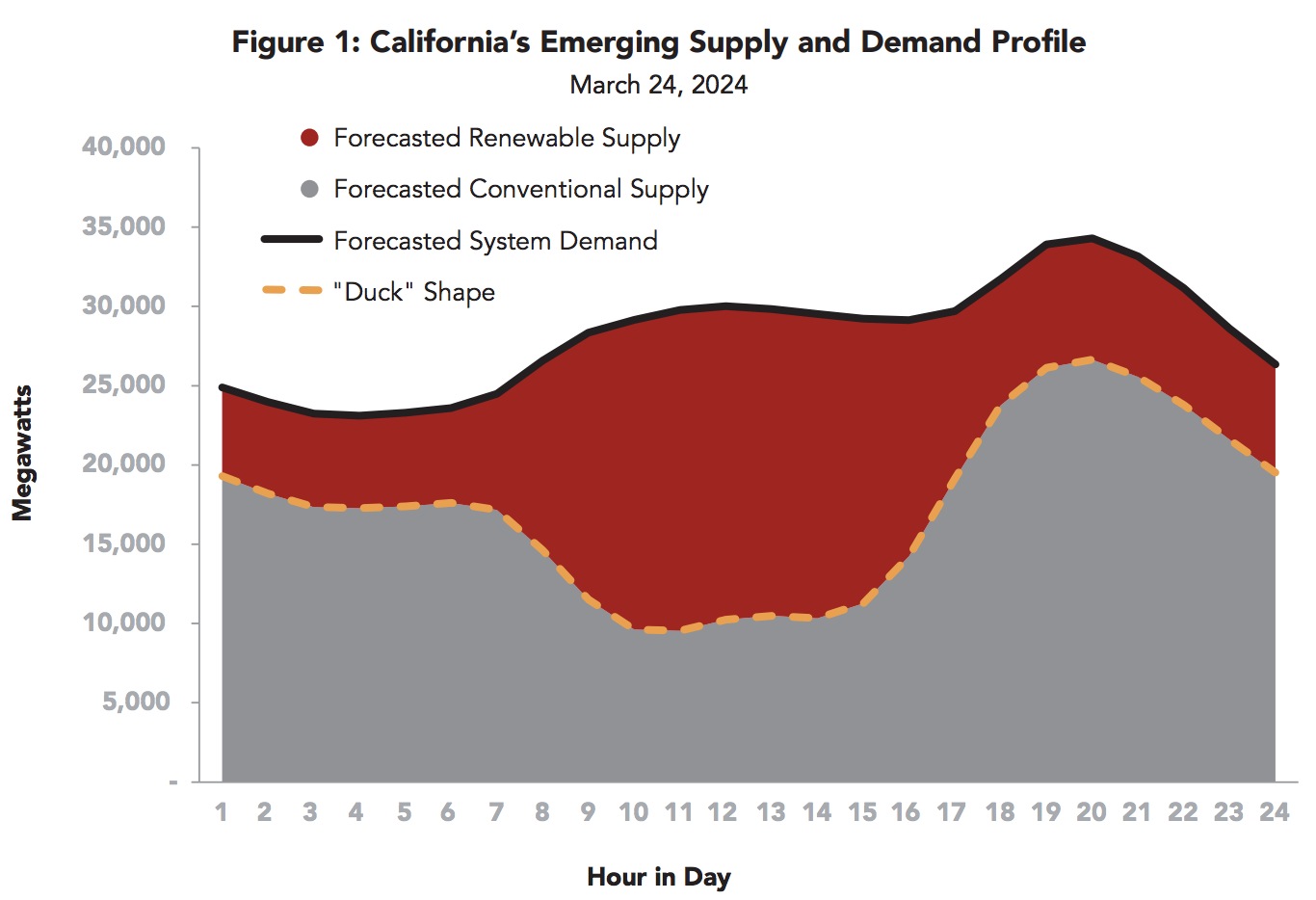ADVANCED ENERGY ECONOMY INSTITUTE (AEE INSTITUTE)
Executive Summary
On February 25, 2015, Advanced Energy Economy Institute (AEEI) hosted a meeting of senior executives from advanced energy companies and California’s investor-owned utilities (IOUs). This California 21st Century Electricity System CEO Forum was an opportunity for energy industry leaders to come together to develop a common inventory of the drivers of industry change and to start to examine utility business models and regulatory concepts that can adapt to and thrive in the emerging energy market environment.
Out of that meeting came a desire by the participants to advance the ideas and concepts discussed at the CEO Forum. This document summarizes that effort. It presents a broad vision of how stakeholders in California can move forward together in a more integrated fashion to achieve the state’s ambitious and important energy and environmental policy objectives.
California’s portfolio of policies, statutes and regulatory actions, whether existing or proposed, has set the state on a path to significant de-carbonization of its energy sector. When coupled with broader industry and societal trends, a transformation of the grid is underway at both the wholesale and retail levels.
A Vision of the Grid in 2030
The Working Group developed a collective vision for the grid in 2030 to guide its work. In this vision, California continues to be a world leader in the use of clean energy resources and the adoption of innovative technologies. The legislature, governor, principal regulatory agencies, utilities, generators, technology and service providers and other key stakeholders are aligned in working to meet the State’s overarching policy objectives in a cost-effective and efficient way while maintaining core values of reliability, safety, affordability and universal access.
The roles and functions of the grid have changed, driven by changes in customer expectations, environmental and other policy objectives and the rapid advancement and deployment of enabling technologies. The utility business model has also evolved to accommodate these changes to enable a more integrated, “plug-and-play” electricity system.
Achieving the Vision
To achieve the vision, the Working Group identified three areas that must be pursued in parallel in order for an effective transition to occur:
- Innovation in product and service delivery
- System design and technology
- Regulatory framework, incentives and revenue mechanisms
Innovation in Product and Service Delivery
While customers have historically had some tools to help them manage their electricity consumption, the options that have become available within the past several years have begun to change the role of customers from consumers to, in a growing number of cases, generators (including exporters of power at certain times). Customers now have more options to manage their energy costs and where their electricity comes from. These options include energy efficiency, demand response, distributed generation, electric vehicles, on-site batteries, control technology for air-conditioning or lighting, programmable controllable thermostats, and building energy management systems. In fact, many customers are employing multiple forms of these technologies. Enabled by these technologies, customers, on their own or working through their energy service provider(s), can also provide services to the grid in response to several types of grid conditions, so that supply and demand are more interactive than was previously possible and management of customer load becomes an asset for grid reliability and affordability.
In short, the information age has arrived in the energy sector and customers have an increasingly important role to play. With the expectation of policies for higher renewable energy and energy efficiency, and deeper greenhouse gas reductions, customer engagement will be critical for achieving these goals. Third-party companies, utilities and customers are expending significant capital to develop, provide and use products and services in this new age of energy information. Many third-party providers of various on-site generation and storage services have already been successful in developing novel ownership and financing models to expand their markets and are competing to offer innovative products and services both to utilities and their customers.
As a result of the changing role of the customer and the information that is now available, the relationship between central planning, utility planning and Distributed Energy Resources (DER)2 deployment is an area of active investigation. As part of this effort, utilities will need analytical constructs to determine the locational value (benefit-cost) of DER and customers will need innovative products and services to realize their ability to provide grid services. In addition, data, data access, privacy and security are becoming increasingly important.
Download full version (PDF): Toward a 21st Century Electricity System in California
About the Advanced Energy Economy Institute
www.aee.net
The Advanced Energy Economy Institute (AEE Institute) is a 501(c)(3) charitable organization whose mission is to raise awareness of the public benefits and opportunities of advanced energy. AEE Institute provides critical data to drive the policy discussion on key issues through commissioned research and reports, data aggregation, and analytic tools. AEE Institute also provides a forum where leaders can address energy challenges and opportunities facing the United States. AEE Institute is affiliated with Advanced Energy Economy (AEE), a 501(c)(6) business association, whose purpose is to advance and promote the common business interests of its members and the advanced energy industry as a whole.
Tags: Advanced Energy Economy Institute, AEE, AEE Institute, CA, California







 RSS Feed
RSS Feed